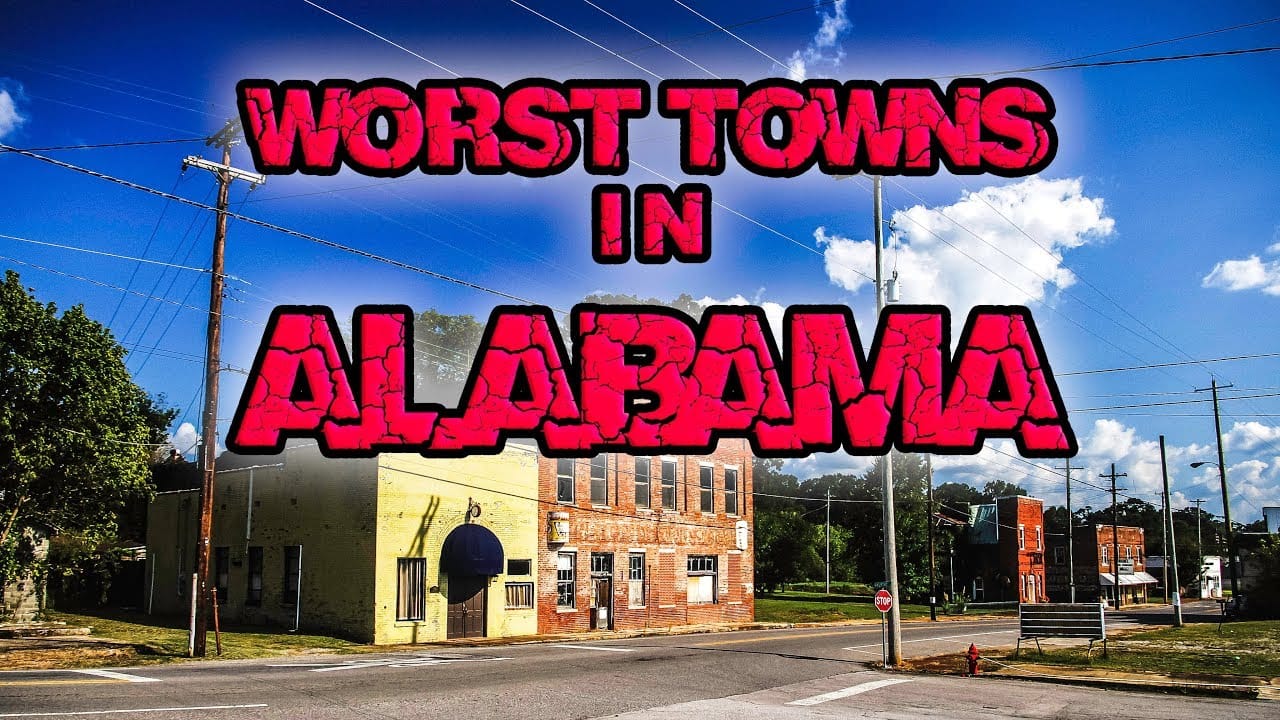Alabama, the heart of the Deep South, offers a blend of rich history, warm hospitality, and a generally affordable cost of living. However, like any state, it has its less desirable locations. This article delves into five of the worst places to live in Alabama, examining the factors that contribute to their lower quality of life.
Methodology
This article utilizes a multifaceted approach to identify and assess the worst places to live in Alabama. The following factors are considered:
- Crime Statistics: Data from the FBI Uniform Crime Report, as well as local law enforcement agencies, is analyzed to determine violent and property crime rates.
- Economic Indicators: Unemployment rates, poverty levels, and median household income figures are obtained from the U.S. Census Bureau and the Bureau of Labor Statistics.
- Educational Attainment: Data on high school graduation rates and the percentage of residents with college degrees are sourced from the U.S. Census Bureau.
- Infrastructure: Reports on the condition of roads, bridges, and public utilities are compiled, along with information on access to healthcare and other essential services.
- Quality of Life Surveys: Residents’ perceptions are gauged through surveys and rankings from reputable organizations like Niche.com.
The 5 Worst Places to Live in Alabama
- Bessemer (Jefferson County)
- Bessemer consistently ranks among the most dangerous cities in Alabama, with crime rates significantly higher than the national average.
- Economic hardship is prevalent, with high unemployment and poverty rates.
- Educational outcomes are below average, hindering opportunities for residents.
- Fairfield (Jefferson County)
- Fairfield suffers from persistently high crime rates, impacting the safety and well-being of its residents.
- Economic stagnation plagues the city, with limited job prospects and a high percentage of the population living in poverty.
- The city’s infrastructure is in need of significant improvement.
- Anniston (Calhoun County)
- Anniston grapples with elevated levels of violent crime and property crime.
- Economic distress is evident, with a high unemployment rate and a significant portion of the population living below the poverty line.
- School systems face challenges, affecting educational outcomes for students.
- Selma (Dallas County)
- Crime rates in Selma exceed national averages, posing a concern for residents’ safety.
- The city faces widespread poverty, hindering economic opportunity and quality of life.
- Selma struggles with aging infrastructure and limited access to essential resources.
- Lanett (Chambers County)
- Lanett has high crime rates, particularly in property crimes.
- Economic opportunities are limited, with a considerable portion of residents living in poverty.
- Educational attainment lags behind the national average, making it difficult for residents to break the cycle of poverty.
Factors Contributing to a Poor Quality of Life
- High Crime Rates: Elevated crime rates create a climate of fear and insecurity, harming the overall quality of life for residents.
- Economic Hardship: High unemployment, widespread poverty, and limited job opportunities restrict residents’ prospects and create a cycle of disadvantage.
- Limited Educational Opportunities: Underperforming schools and low educational attainment hinder upward mobility and economic advancement.
- Poor Infrastructure: Crumbling roads, outdated utilities, and limited access to basic services negatively impact residents’ daily lives.
Important Considerations
- Subjectivity: It’s important to remember that quality of life assessments can be subjective. What one person might consider a terrible place to live may be tolerable for another.
- Neighborhood Variations: While these cities have overall poor rankings, they might still contain pockets of safe and desirable neighborhoods.
- Potential for Change: Conditions in any city can change over time. Some struggling communities might see improvement due to revitalization efforts or economic shifts.
Conclusion
While Alabama offers many wonderful places to live, the cities discussed in this article face significant challenges impacting their overall quality of life. High crime rates, poverty, underperforming schools, and inadequate infrastructure create obstacles for residents.
It’s crucial to acknowledge that these cities are not without hope. Initiatives aimed at reducing crime, stimulating economic growth, improving educational opportunities, and investing in infrastructure have the potential to lead to positive change. By recognizing the challenges faced by these communities, we can work towards creating a brighter future for all Alabama residents.
Sources
- FBI Uniform Crime Report: https://ucr.fbi.gov/
- U.S. Census Bureau: https://www.census.gov/
- Bureau of Labor Statistics: https://www.bls.gov/
- Niche.com: https://www.niche.com/
- Local and state news sources: These would provide specific updates on the current situation in each city.



